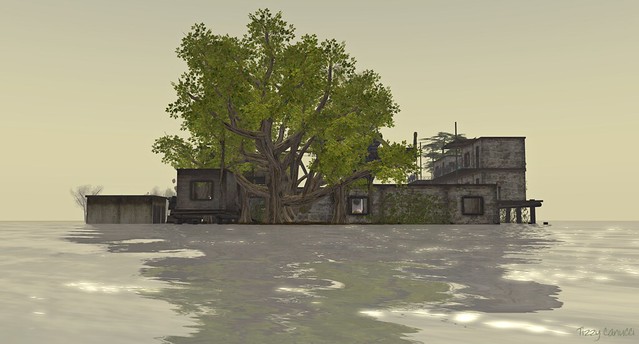Why the attraction of water? Reflections surely are part of it. And shallow virtual Waterworlds avoid the real life inconveniences of mud, mosquitos or leeches. In Second Life, land can be brought easily out of the water, or pushed back into it, and in these waterlands, one is able to walk and move at surface level, as the water is so shallow.
But wetlands are also borderlands, liminal areas that are neither quite one thing or another. They are areas on the edge of ‘civilisation’, touched and penetrated by it, but ultimately not entirely within the control of it. They are areas of uncertainty, of familiarity and unfamiliarity, of memory, forgetfulness and remembering.1 Virtual Worlds are themselves liminal, being worlds accessed from another world. Even that most desirable experience of virtual world travellers, immersion, has a double meaning – of complete mental presence in the world and of being submerged in a liquid – both of which apply in these places.
H22O shows this at its most intense. It is dark and grey, and features sparse in grey water. It is constantly raining, and oppressive with the persistent sound of thunder and falling rain. A woman stands on a pier while other women stand darkly in the shadows, and far out a ship founders.

Annwn Willows is not so bleak – more surreal. A displaced ice cream van stands at the landing point. The buildings rise up, reflected in the water. In an inversion of normality, plants grow inside the buildings, another conventional border crossed. Across everything is a pale light, diffusely illuminating pastel colours, especially yellows.

- Andrews, H. and Roberts, L. 2012. Liminal Landscapes: Travel, Experience and Spaces In-between. Routledge.; Mandelman, A. Wetlands as Borderlands: Where Land and Water Meet. Porous Places: a Blog about Watery Landscapes. Available at: http://www.adammandelman.net/2012/06/01/borderlands/ [Accessed: 10 June 2014].

One thought on “Waterworlds”